Happy Thursday! The Library of Congress blamed a “coding error” after text from the U.S. Constitution, including a section on the right to habeas corpus, mysteriously disappeared from the Constitution Annotated website for a few hours Wednesday. Hopefully the constitutional glitch only occurred in the cyberworld.
Quick Hits: Today’s Top Stories
- President Donald Trump’s new tariffs on more than 90 countries went into effect just after midnight Thursday, raising the average U.S. tariff rate to the highest levels in a century. “BILLIONS OF DOLLARS IN TARIFFS ARE NOW FLOWING INTO THE UNITED STATES OF AMERICA!” he declared on Truth Social. The new rates start at 10 percent but some—for countries such as Brazil and India—soar as high as 50 percent. Further trade negotiations among several countries are expected to continue.
- Trump on Wednesday announced plans to double India’s tariff rate from 25 percent to 50 percent because of the country’s continued purchase of Russian oil. According to a new executive order, the White House will impose the additional tariff starting on August 27, and any other country found to be importing Russian oil could face a 25 percent tariff on top of the levies already imposed. India’s Foreign Ministry criticized the move, calling it “unfair, unjustified and unreasonable.” Last weekend, Indian officials indicated the country would not stop buying oil from Russia despite threats from Trump.
- Trump said Wednesday that he will impose a 100 percent tariff on all chip and semiconductor imports. He made the announcement at an Oval Office event with Apple CEO Tim Cook, touting Apple’s planned $100 billion investment in American manufacturing. Trump said the plan would include tariff exemptions for companies that are “building in the United States”—specifically singling out Apple—but the specific terms of the carveout were unclear.
- White House special envoy Steve Witkoff met with Russian President Vladimir Putin on Wednesday, ahead of Trump’s Friday deadline for Putin to agree to a ceasefire in Ukraine. “Great progress was made!” Trump said of the meeting in a post to Truth Social. He added that “everyone” wanted the war to end and would be working toward that goal in the “days and weeks to come.” Ukrainian President Volodymyr Zelensky, in his nightly address on Wednesday, indicated that Russia has become more amenable to a ceasefire. Next week, Trump reportedly plans to meet with Putin, shortly followed by a three-way meeting including Zelensky.
- Tennessee GOP Sen. Marsha Blackburn announced on Wednesday that she is running for governor of Tennessee. In a post announcing the campaign, Blackburn aligned herself closely with the president, declaring “Trump is back” in a video on her decision to run. The state’s current Republican governor, Bill Lee, is term-limited, but Blackburn will face GOP Rep. John Rose in the primary. If elected, Blackburn would be able to choose her successor in the Senate, because her term in the upper house does not end until 2031.
- Swiss President Karin Keller-Sutter left a quickly arranged trip to Washington on Wednesday without securing a lower tariff rate from the Trump administration. Keller-Sutter met with Secretary of State Marco Rubio in a meeting she described as “very good,” but Switzerland still faces a 39 percent tariff beginning today. Keller-Sutter was reportedly seeking to lower the rate with the U.S.—Switzerland’s largest export market—to 10 percent. The current rate is higher than the 31 percent import tax set in April and the highest U.S. tariff on any developed nation.
- OpenAI on Wednesday announced plans to provide ChatGPT Enterprise to all U.S. federal agencies for just $1 for the next year. The announcement comes after OpenAI, along with other major AI developers, received a $200 million contract from the Department of Defense for its OpenAI for Government initiative. Executives at OpenAI said that providing ChatGPT to the government at essentially no cost is not a move to gain an advantage over competitors, but rather to scale adoption of AI across the federal workforce.
- A 28-year-old U.S. Army sergeant on Wednesday opened fire on his own unit at Fort Stewart in Georgia, according to officials there. Allegedly using his personal handgun, the gunman wounded five soldiers before being tackled. None of the troops sustained life-threatening injuries, according to the base’s commander, Brig. Gen. John W. Lubas. “All are expected to recover,” he said. A motive was not clear as of Thursday morning.
Over a Barrel

In the most shared scene of the hit TV drama Landman, protagonist Tommy Norris (played by Emmy-snubbed Billy Bob Thornton) explains to his attorney that everything—including wind turbines—runs on, and is made of, oil:
We have a 120-year petroleum-based infrastructure. Our whole lives depend on it. And, hell, it’s in everything. That road we came in on. The wheels on every car ever made, including yours. It’s in tennis rackets, and lipstick, and refrigerators, and antihistamines. Pretty much anything plastic …
He’s not wrong, which is slightly unfortunate as nobody quite understands the oil market at the moment. As Antoine Halff—co-founder and chief analyst at energy intelligence company Kayrros—told TMD: “The oil market is a bit of a puzzle, and most analysts are kind of stumped. It’s not behaving the way people would expect based on their understanding of the fundamentals like supply and demand, that sort of thing.”
In recent months, many economists have predicted a recession on the horizon, and, as the strength of the oil market largely tracks the growth of the American and global economy, most oil analysts entered 2025 predicting slowing demand. The International Energy Agency (IEA) predicted in its oil market forecast that global oil demand would rise by only 2.5 million barrels per day from 2024 to 2030, with annual growth slowing year by year, which represented the consensus view.
But, despite tariff threats and uncertain markets, eight OPEC+ countries (the Organization of the Petroleum Exporting Countries: a permanent, intergovernmental organization to coordinate oil policies) announced in April that they would increase their oil production, releasing roughly half a million extra barrels per day in May. This was a reversal from the group’s 2023, post-COVID production cuts. They increased supply again in July, then again on Sunday, August 3.
On paper, this should have led to a dramatic increase in oil supply right as demand decreased, collapsing the oil price. And perhaps that was the plan for OPEC, which exists to increase revenues for its member countries any way possible. Reducing the price of oil makes it hard for non-OPEC countries to compete on price. Halff told TMD that a 1997 output increase drove “a lot of non-OPEC production, including US production, out of the market for 10 years, and it took them years to come back.”
But the price didn’t collapse. Why?
The first explanation, according to Ken Medlock (senior director of the Center for Energy Studies at Rice University’s Baker Institute), is that OPEC saw demand that the forecasters didn’t, particularly in the global south. Developing countries have less capital to invest in new forms of energy, while also needing a lot of energy immediately. Plus, “oil is still a really easy commodity to move. It’s a liquid; you can put it in a barrel, you can put it in a bucket if you want to,” Medlock told TMD. “At some point it just becomes a numbers game. How do you actually meet economic growth targets in those countries with growing populations? Well, you’re going to have to produce a lot of everything. And that’s really what OPEC leans into in their outlook.”
OPEC’s World Oil Outlook 2025 was the outlier in oil forecasts, predicting consistent growth in the oil market, and it grounded its projections on that point about global demand. To note: Although most of OPEC’s increased output has come from Saudi Arabia and the Gulf States, none of TMD’s sources thought their increases were influenced by politics or attempts to curry favor with the Trump administration. Conversely, several suspected that the pessimistic forecasts from organizations like IEA may be influenced by support for transitioning to a renewable grid.
The second explanation for the oil price holding is somewhat more ominous: China has been building up unprecedented oil reserves. “China has massively increased its storage capacity over the years—over the decades, really—but that increase has accelerated over the last year,” Halff told TMD. According to IEA and data from Kayrros, China has increased its crude inventories by an estimated 82 million barrels (equivalent of roughly five days of total U.S. oil consumption) during the second quarter of 2025. This was spurred by a new energy law in China enacted at the beginning of the year, which made the establishment of strategic reserves a legal obligation for both state-owned and private companies. China’s oil-hoarding either helped stabilize the price of oil in an uncertain market, or absorbed oversupply, preventing a price crash, depending on your viewpoint. It could also be preparation for an invasion of Taiwan or just part of China’s move toward greater energy security, seen also in its investments in coal.
Information about China’s stockpiles comes via satellite imagery, as “Chinese inventories are kind of a black box,” according to Medlock. But the use of satellites has made for a far more transparent and resilient oil market. This year, there have been tensions with China, war with Russia, and strikes on Iran, and yet none of these have particularly upset the oil price. “In the past, there was no transparency, so the market was panicking every time there was a disruption,” Halff said. The ability to track the world’s oil from space “has made the market much more resilient, much more nimble, much more able to quickly respond to a disruption in supply.” Even something as extreme as taking out Iran’s oil fields wouldn’t have a huge impact on oil prices, according to Medlock, as “there’s enough spare capacity on the global system to offset” their 1.5 million barrels a day.
Finally, there’s the question of the health of the American oil market, and President Donald Trump’s statements on this are somewhat contradictory. On one hand, Trump wants American companies to “Drill baby, drill!” but he also campaigned on bringing down oil prices for the American commuter. “Those things do not go together,” Medlock told TMD. “If the price is too low, then it’s not healthy enough to support a vibrant upstream oil sector because you can’t cover costs.”
Industry leaders told TMD that a “healthier”—higher—oil price, combined with the administration’s deregulation and easier permitting, could make for a good period for smaller, independent producers. However, the Permian Basin is changing, with large companies like Exxon and Chevron buying up more land and smaller firms, and these multinationals may benefit from a decreasing oil price, making for cheaper acquisitions. As Medlock noted, that too could be beneficial long-term for American oil, as new innovations could potentially increase the oil extractable from shale.
Regardless of their views on OPEC, the IEA, or the future of American oil, every source TMD spoke to said it was tough to predict what was going to happen with the oil market at this moment. Trump’s economic policy is defined by uncertainty, and nobody knows whether he will hold to his policies, and what those policies will do if he does. Trump on Wednesday announced higher tariffs on India for purchasing Russian oil, but is that a bargaining chip or a real policy? And will the U.S. impose tariffs on other countries that purchase Russian oil?
Whatever happens, oil isn’t going away anytime soon, and unless Paramount’s new owners cancel Landman, Tommy will have a job for a long time to come.
Today’s Must-Read
No matter the level of ideological capture in either, though, sciences and the humanities are organized differently, operate differently, and have different raisons d’être. It is almost as if the respective faculties are different species. Jewish law has something to say on this. It prohibits the yoking together of oxen with asses, because animals of different strengths and different strides should not be forced onto the same team. But the principle can be applied more broadly. In the modern American university, the sciences have historically been “yoked” to the humanities.
Toeing the Company Line
The Death Cult-Prison Gang That Is Hamas
Too many in the West give the terrorist organization too much benefit of the doubt.
Shots Fired
Should Democrats shut down the government over vaccine policy?
Palestinian Statehood Is the Only Answer
Achieving a two-state solution will be difficult. The alternatives are impossible.
There Is an Alternative
Palestinian sovereignty and Israeli security are irreconcilable.
The Revolutions of 1776 | Interview: Phillip Muñoz
“Render unto Caesar.”
Drive-By Rulings | Interview: J. Joel Alicea
Does Section 2 of the Voting Rights Act violate the exemptions clause?
Worth Your Time
Less than 2 miles from the Florida line sits Folkston, Georgia, a rural city home to some 4,700 people and, soon, the country’s largest immigrant detention center. But the facility has been met with mixed reactions from Folkston locals, Guy Chazan reported for the Financial Times. “About 400 new jobs will be created with the expansion. ‘This is a job producer, so the people are excited about it,’ said Buddy Carter, a Congressman who represents this part of Georgia and played an instrumental role in landing the deal. … But others worry about the reputational hit Folkston is about to take. ‘I can’t accept the idea that the number one thing that will mark us out is having the biggest ICE detention centre in the country,’ said Antwon Nixon, a local pastor and activist,” Chazan wrote. “The move to expand the Folkston centre makes perfect sense to [Charlton County administrator Glenn] Hull. ‘You have a physical asset in your community and it would be irresponsible not to maximise it,’ he said. ‘You’re either growing or dying as a community.’ He is also hoping Charlton County’s role in the expansion could further loosen the Trump administration’s purse strings. ‘We’re providing a service to the federal government — maybe they could do something for us?’ he said.”
Presented Without Comment
New York Times: Man Who Lit Cigarette From Eternal Flame in Paris Is Arrested
Also Presented Without Comment
The Hill: Former Georgia Lieutenant Governor Joins Democratic Party
In the Zeitgeist
The Toronto International Film Festival released its lineup of films on Tuesday. We were particularly excited to see Love+War, a documentary about Pulitzer Prize-winning combat photographer Lynsey Addario, make the list.
Let Us Know
Did you watch Landman? If so, what did you think?
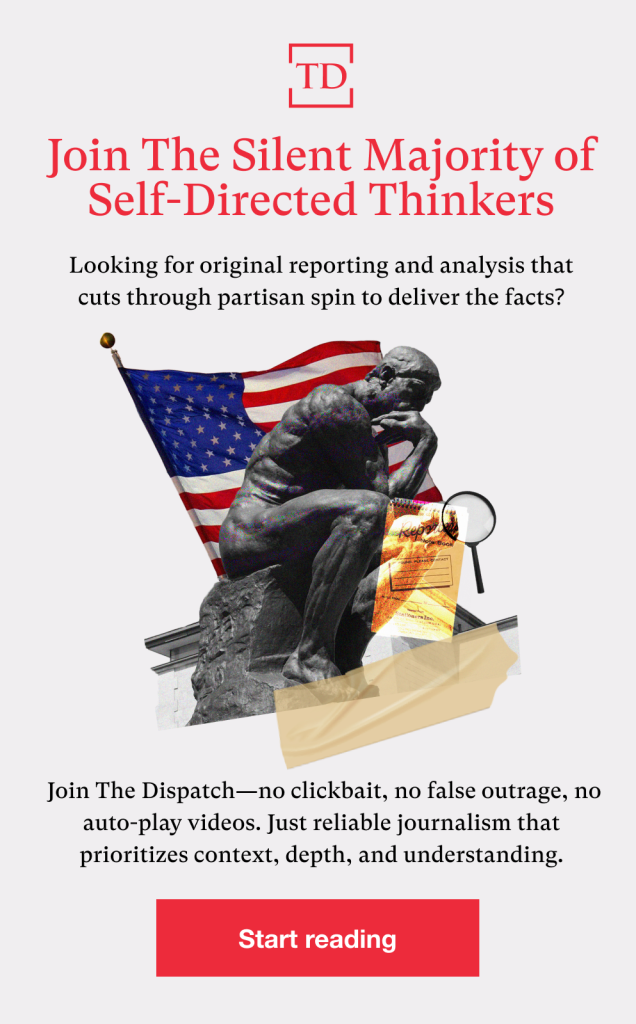

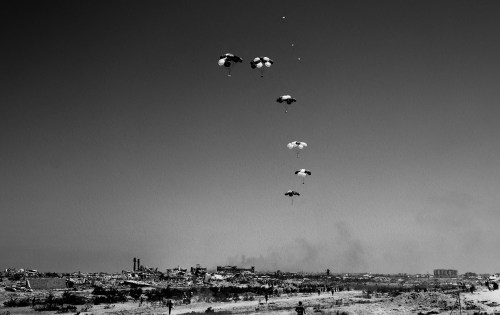
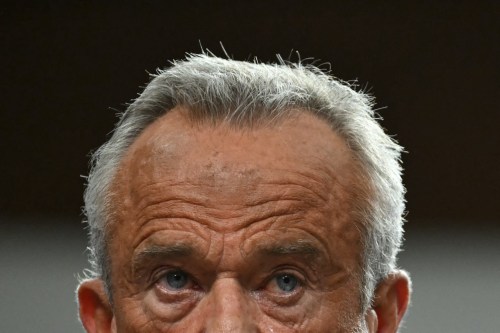


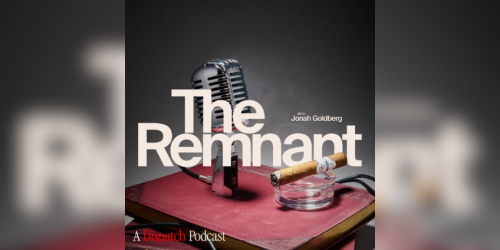
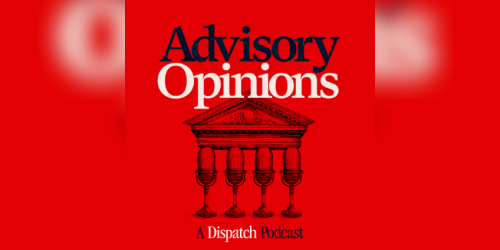
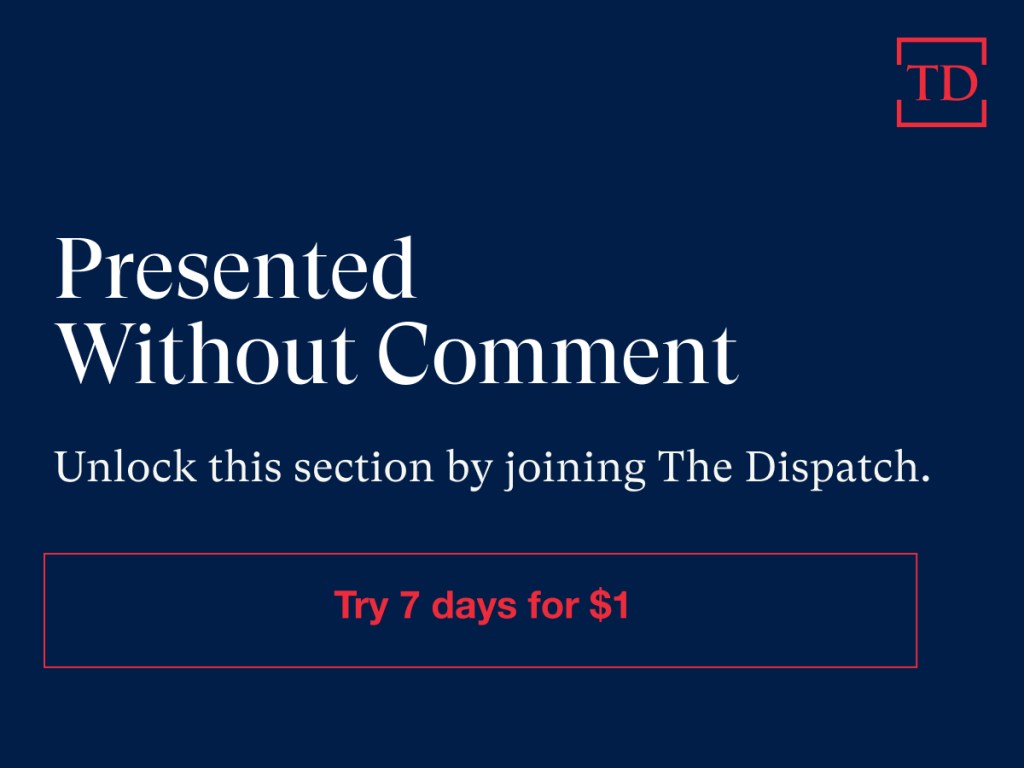




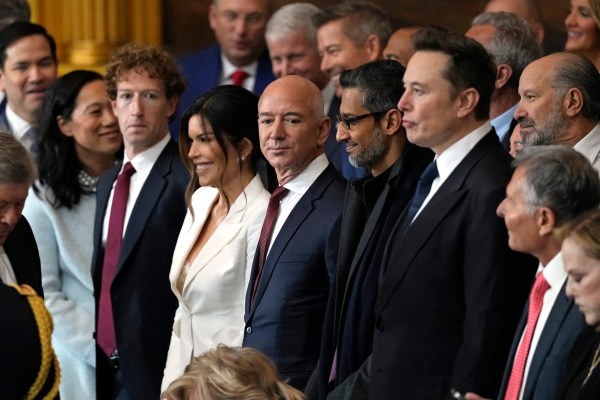
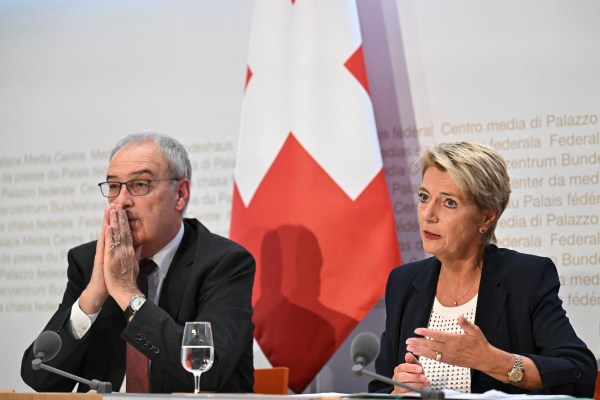
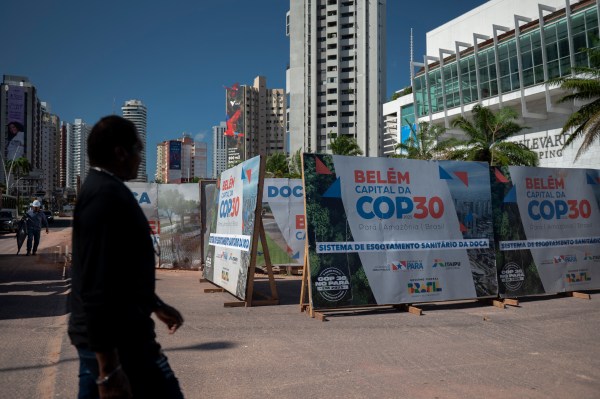
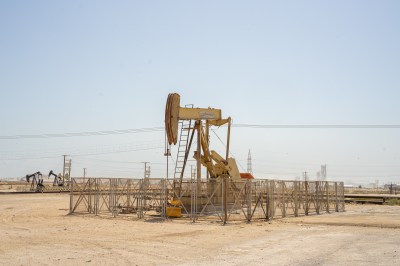
Please note that we at The Dispatch hold ourselves, our work, and our commenters to a higher standard than other places on the internet. We welcome comments that foster genuine debate or discussion—including comments critical of us or our work—but responses that include ad hominem attacks on fellow Dispatch members or are intended to stoke fear and anger may be moderated.
With your membership, you only have the ability to comment on The Morning Dispatch articles. Consider upgrading to join the conversation everywhere.